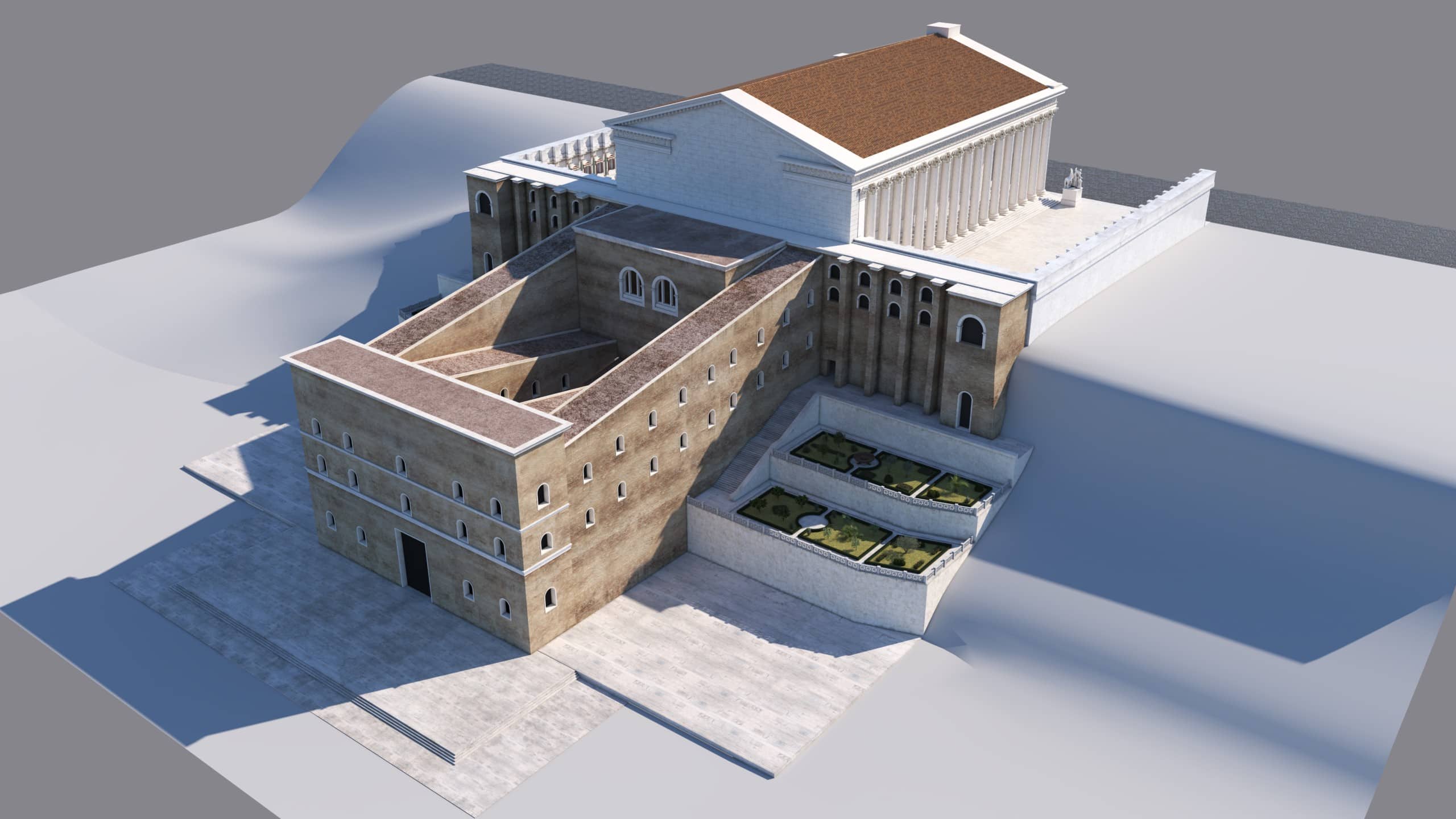MuMoSiSt
Multidisciplinary approach to multilayer monumental site studies: the case of the Quirinal Hill in Rome
Marie Skłodowska-Curie Individual Fellowship (9.2015–8.2017), Dr. Alessandro Spila, Politecnico di Torino
The co-existence of multiple of historical phases in a single site is a fundamental characteristic of cultural heritage. The project MuMoSiSt was aimed at devising a methodological approach that takes account of such multiplicity. It was devoted to developing methods that can bridge a gap that currently exists between studies that are too narrowly focused on a single historical moment, and studies that are overly broad. One of the goals of the research was to develop an interactive database containing data about the historical phases of a particular site – the Temple of Serapis in Rome – while offering a global assessment of its development over time.
Given its complex stratigraphy, the area of the ancient Temple of Serapis on the Quirinal Hill in Rome offered an ideal case study. The research involved the systematic collection of data related to all phases in the historical development of this area, including the Temple’s destruction. The analysis of all temporal phases was fundamental to the creation of a method that brings together the expertise of specialists working in different historical periods. This overall approach is one particularly suited to the study of ancient monuments which no longer survive, but are known primarily by means of the post-antique documents catalogued in the Census.
During the project, research was carried out on the post-classical topography of the Temple of Serapis, with particular focus on the houses of the Colonna in the early modern era: the so called Palazzo dell’Olmo and the Loggia dei Colonnesi, which partially overlapped with the ancient ruins of the temple’s eastern double stairway. A number of unpublished documents from the Colonna archives were collected, analyzed and compared with early modern documentation of the remains of the ancient compound preserved in the Census database. Research was extended to archival and iconographic sources related to building in the area in more recent times, especially the construction of the Piazza del Quirinale between the 17th and the 19th century. Multiple layers of history and topography were investigated simultaneously, thus allowing for the study of this area in its full complexity. This approach models a method that can link together scholars working in different specialisations, and can be applied in future larger studies dealing with multilayered sites and monuments.
The collection of sources in the MuMoSiSt database, www.mumosist.eu, brings together an enormous amount of information relevant to the analysis of this complex monument as well as planimetric reconstructions.

Alessandro Spila, Reconstruction of the staircase and Temple of Serapis on the Quirinal hill
Related publications:
A. Spila, ‘I Giardini nel Settecento. Gli interventi promossi dal contestabile Fabrizio IV e dal cardinale Girolamo II’, in Palazzo Colonna. Giardini. La Storia e le Antichità, ed. Maria Grazia Picozzi. Rome: De Luca, 2018, pp. 183–206.
A. Spila, ‘The Double Stairway of the Temple of Serapis on the Quirinal Hill: Fame and Oblivion in the Early Modern Period,’ Pegasus. Berliner Beiträge zum Nachleben der Antike 18/19 (2018): 39–71.
A. Spila, ‘Palladio e Antonio da Sangallo il Giovane sul grande tempio del Quirinale’, Annali di architettura. Rivista del Centro Internazionale di Studi di Architettura Andrea Palladio 29 (2017): 135–142.

This project has received funding from the European Union’s Horizon 2020 research and innovation programme Marie Skłodowska-Curie actions (MSCA) under grant agreement No 655480.